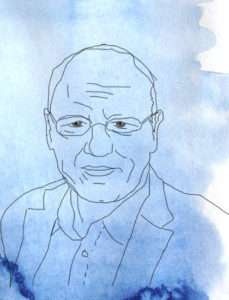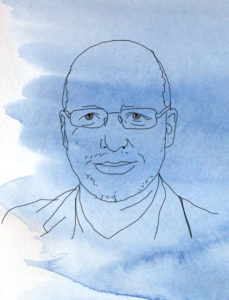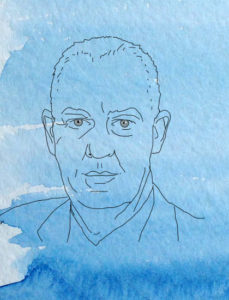The financial market creates a pervasive layer of interconnectivity in the world – a global network. For this reason, it exhibits an infrastructure that reflects its own kind of “world logic”. Perhaps this is precisely why the banking industry is stuck in its own patterns of thought like no other: it continually strives to impose its own product logic onto the rest of the world. Yet this product logic is outdated and, more than anything, simply reflects the banks’ internal structures.
Now, as is well known, the disruption of the banking business through digital transformation has long been imminent. Processes are being digitalized and old business models prove to be outdated. But this is a tremendous movement, and the mood it stirs up fluctuates between hysteria, actionism and repression. How, after all, does it really work to reinvent yourself?
Change of perspective: thinking banking from life
We believe above all that it is the way of thinking that needs to change. A radical change of perspective in banking is needed. What interesting new perspectives arise, for example, when you think about banking from side from which money flows? the side from which portfolio content and the points of contact with the bank become a natural extension and a seamless link to people’s lives? What would it mean to consider the reality of banking from the customer’s perspective?
These are exactly the topics that this blog is about. We are happy to reach like-minded people, black sheep, and visionaries who recognize, share, and exchange the theses expressed here
About the authors of this blog
 Dr. Lothar Jonitz, Founder-CEO tetralog systems AG
Dr. Lothar Jonitz, Founder-CEO tetralog systems AG
»I’ve worked in the financial industry for a quarter of a century. In 1993, when nobody even knew how to spell fin-tech, a Robo-Advisor would have been some kind of action hero. After studying psychology, I had the crazy idea – which, as it happens, is still viable today – of using the measurement of an individual’s risk personality to provide investment advice with a sound, scientific basis; thus making it documentable and audit-proof. The company that emerged from this idea is tetralog systems AG and our scientific risk profiling still exists. It is one of 50 intelligent modules with which tetralog systems AG digitalizes the entire value chain of investment consulting.
In the banking business, I am probably still a bit of an outsider. That’s good, because it is thinking outside the box that makes the difference.«
 Matthias Brabetz, Risk Sociologist
Matthias Brabetz, Risk Sociologist
»A preoccupation with the side effects and interactions of technology and risk runs like a red thread through my work. In transforming risks, uncertainties, and ambiguities into acceptable bases for action and decision making, we tend to always draw from the same pool of social and cultural practices that manifest themselves in the current methods and technologies for risk (perception) management. The actors’ need for security is always in conflict with their intention to act. At tetralog I work in a transdisciplinary team on innovative solutions that make the facets of risk perception tangible. In this way individual risk awareness is sharpened and a deeper understanding of desired and undesired consequences and side effects is established. As a side note, this also helps with the rapid locomotion on two wheels, where the side-effect thrill benefits in the long term from adequate risk awareness.«
 Dr. Peter Tigges, Conceptual Continuity
Dr. Peter Tigges, Conceptual Continuity
»In my scientific career I have dealt with eye movements. Today I have my eyes firmly fixed on the modelling of complex financial products and stand for the conceptual continuity at tetralog. Helpful is my background as a mathematician and my preference for standing balancing on floating boards, which hopefully gives me the sometimes necessary balance.«
 Joachim Loening, Software Backbone
Joachim Loening, Software Backbone
»Initially, neuronal networks were professionally groundbreaking for me. The question is often whether the result is a global or a local optimum. As a mathematician, I am now involved with the question of portfolio optimization and I work to transform complex problems into software solutions.
Privately, I am interested in the question of what human image perception perceives as harmonious. I like to take architectural photos and I am particularly interested in spirals – which, by the way, are difficult to describe as a spiral staircase without fingers.«
The surreal pictures of Joachim Loening show the beauty in a captivating mathematical view and are featured by this blog. Similar to the way they often depict passageways and interstices in unusual perspectives, our blog posts often deal with access to the clients’ living world and a change of perspective in entrenched ways of thinking. Follow Joachim Loening on Instagram


